
All categories
Featured selections
Trade Assurance
Buyer Central
Help Center
Get the app
Become a supplier

(765 products available)




















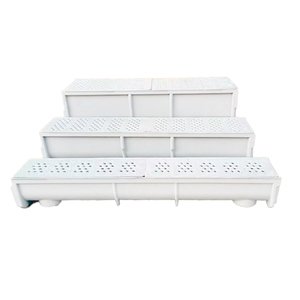
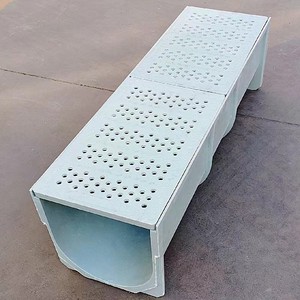





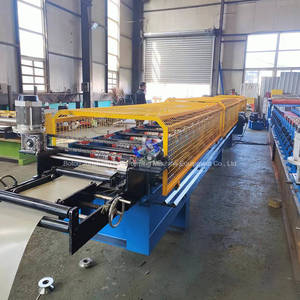

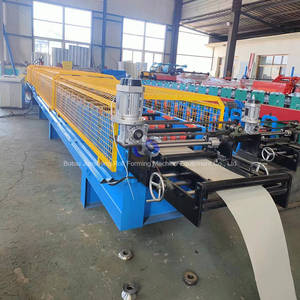
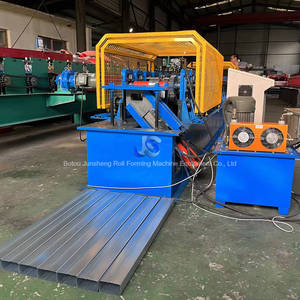





















Plastic Gutter Reducer
A plastic gutter reducer is lightweight and easy to install, providing a cost-effective solution for most residential settings. Its resistance to rusting and corrosion makes it well-suited for rainy and snowy climates. However, exposure to extreme temperatures may cause brittleness over time. The plastic reducer effectively seals joints and minimizes leaks, making it a trusted choice for DIY projects and professional repairs alike.
Stainless Steel Gutter Reducer
The stainless steel gutter reducer is preferred by property owners requiring a durable and long-lasting solution. This type of reducer is highly resistant to weather elements, UV radiation, and corrosion, making it fit for coastal or heavily variable climates. Its sleek and shiny finish also adds a modern touch to premium properties. Although stainless steel gutter reducers are more expensive, their durability equals less maintenance and replacement in the long term.
Aluminum Gutter Reducer
The aluminum gutter reducer combines strength and lightweight properties, making them easy to handle and install. It comes painted or prepped for painting so that it will match any home's color scheme. Aluminum is rust-resistant and performs reliably in different weather conditions. Aluminum reducers serve affordable long-term solutions for residential and commercial buildings, though they are less robust than stainless steel.
Copper Gutter Reducer
Copper reducers for gutters are the choice for luxury homes and historic buildings. Renowned for their unmatched durability, copper reducers develop a protective patina over years, shielding against corrosion. This transforms the aesthetic appeal into a distinguished antique style. While copper is more costly up front, its lifespan far exceeds that of aluminum or plastic. Copper reducers work reliably for large water volumes and adverse weather conditions.
Galvanized Steel Gutter Reducer
Galvanized steel gutter reducers offer a highly durable and cost-effective solution for reducing downspouts. Coated with zinc, these reducers provide excellent resistance to rust and corrosion, especially in harsh weather environments. Although heavier than plastic or aluminum options, galvanized steel is built to handle larger volumes of water and extreme conditions. This makes it ideal for commercial buildings and other agricultural installations.
Efficient Water Flow Management
Gutter reducers efficiently manage water flow by redirecting water from wider gutters to narrower downspouts. They help avoid overflow and debris accumulation and therefore prevent extensive damage to the roof, fascia, and foundation. In this sense, they help ensure gutters channel collected water quickly with balanced pressure throughout the system.
Prevention of Water Damage
A gutter downspout reducer ensures water is directed safely away from a building's foundation to prevent water damage. By properly channeling gutter water, they reduce the likelihood of flooding around the foundation, which can cause cracks and other structural issues. They also help keep landscapes and yard areas healthier and drier by preventing excess water accumulation.
Compatibility with Existing Systems
They make a gutter reducer ideal when adapting a new system to fit an existing gutter infrastructure. For example, when a new downspout is installed, a gutter reducer creates a proper and effective fit between different sizes. This saves time and money by eliminating the need for a complete gutter system redesign or replacement while still achieving optimal water flow.
Debris Reduction and Maintenance
Gutter reducers also help reduce debris buildup by streamlining the water passage through the gutters and downspouts. When water flows quickly and efficiently, fewer leaves, dirt, and other debris can accumulate in the system. This reduces the need for frequent cleaning and maintenance, allowing the gutter system to function more effectively year-round.
Enhanced System Durability
By balancing the water pressure throughout the gutter system and preventing overflow, reducers in gutters contribute to the system's longevity. Excess water and debris can cause gutters to sag, brackets to loosen, and even lead to rust or corrosion in metal gutters. Reducing the strain on the system helps keep it in good condition longer and requires fewer repairs or replacements.
Home Improvement Projects
Gutter reducers enable homeowners to manage rainwater properly. This protects the home's structural integrity by preventing foundation flooding and erosion. Also, the maintenance-free plastic gutter type reduces the total expenses. This makes gutter reducers an affordable solution for DIY homeowners and home improvement contractors.
Roofing and Construction Industry
In both the roofing and construction industries, gutter reducers are important for establishing a long-lasting and effective rainwater drainage system. These reducers guarantee downspouts match existing gutters during new construction or renovation. This allows constructors to keep quality standards and avoid excessive water-related damage to the building.
Real Estate Value Enhancement
Reduction and proper management of rainwater through gutter reducers aid homeowners in maintaining their properties. This decreases the risk of mold, water stains, and foundation cracking and increases curb appeal. Having a strong and effective drainage system in place increases interest in real estate and helps maintain home value over time.
Landscape and Yard Health
Proper rainwater management protects the health of grass, trees, and plants surrounding a home or building. Gutter reducers channel water away properly from the foundation and backyard. This prevents flooding and erosion while ensuring enough moisture without overwatering. Therefore, homeowners and landscapers interested in maintaining a healthy yard will find these reducers advantageous.
Commercial and Residential Building Drainage
In both residential and commercial buildings, gutter reducers direct rainwater from the roof to the ground properly. They prevent flooding in parking areas, driveways, and yards by channeling the water safely away from the buildings. Large-capacity steel and plastic reducers are ideal for commercial buildings with extensive roof areas.
Reduced Erosion and Enhanced Safety
Gutter reducers lower the danger of soil erosion around a property by directing rainwater to drain regions designed for it. This maintains the landscape by preventing excessive water accumulation and subsequent flooding. Additionally, by limiting flooding risk around walkways, driveways, and roads, gutter reducers promote safety for residents and visitors.
Long-Term Property Protection
Gutter reducers cut long-term costs associated with water-related repairs by reducing overflow, flooding, and erosion. They are important for property owners intending to protect their investments as part of the preventive maintenance measures. Gutter reducers and effective gutters keep damage to a minimum.
Gutter Material
Different gutters require reducers made of various materials, too. Use a plastic gutter to a plastic reducer while stainless steel will go with stainless steel. The common materials for reducers include plastic, stainless steel, copper, galvanized steel, and aluminum. The object is to achieve compatibility on the basis of expansion or contraction from changes in temperature and other factors.
Gutter Size
Choose a gutter reducer that suits the size of the gutter. Measure the gutter width and select a reducer that matches the size to ensure water flows efficiently without overflow or blockade. It must be a tight fit between the gutter and the reducer for an effective water management system. Proper sizing also eliminates debris accumulation in the gutter.
Downspout Size
The purpose of a gutter reducer is to connect the gutter to the downspout. So the reducer's output size must match the downspout's diameter. This will ensure effective water flow without excess pressure. Look for adjustable reducers if installing in a situation requiring offsetting or unusual sizes.
Weather Resistance
Pick a gutter reducer that suits the weather conditions in the area. For example, stainless steel or copper will suit coastal regions with high humidity and salt exposure. Alumiunim and plastic are better for regions with extreme temperatures. Effective weather resistance prolongs the lifespan of reducers and ensures effective performance throughout all seasons.
Load Bearing & Aesthetic
For a heavier load the reducer will bear, such as in commercial buildings, go with the galvanized steel or stainless steel types. For residential homes or light duty, lightweight plastic or aluminum will do. Also, consider the aesthetic factor. Stainless and copper steel reducers have an attractive premium finish for high-end homes. Plastic and galvinized steel cones in cheaper and practical applications.
Ease of Installation
Greatly consider the gutter reducer diameter and installation complexity, especially if planning to do it without professional help. Most plastic and aluminum reducers feature a simple slip-on connection. Stainless and copper steel require cutting and soldering, hence complex and better done by a pro. Properly installed reducers ensure effective the gutter system performs efficiently.
A gutter reducer's main purpose is to connect the gutter system to downspouts properly. As a reduction piece, it enables the flow proportional by fitting wider gutters to narrower downspouts. By ensuring a proper fit, reducers effectively control and direct water flow to prevent overflow and backsplash. This protects the home's foundation, prevents erosion, and avoids water damage.
Gutter reducers come in various materials that suit both the location and purpose. For example, plastic is practical and cheap for residential homes. Stainless and copper steel are types for premium and coastal houses. For most climates and applications, aluminum balances cost and strength. Galvanized steel is for commercial constructions where high load and durability are required.
Although both are related to the gutter system, a gutter reducer and downspout are different. A gutter reducer is a fitting to connect the gutter to the downspout. In contrast, the downspout reducer is a component that channels the collected rainwater from the gutter to the ground. In simple terms, the reducer is a bridge, while the downspout is a channel.
The gutter and reducer are connected, forming part of the rainwater drainage system. The gutter collects rainwater from the roof, while the reducer allows it to flow to the downspout. By providing a seamless transition between them, the gutter reducers for gutters prevent overflow and ensure effective water management. Hence, they protect the home's structure and surrounding landscape.
Some reducers are adjustable to make them suitable to existing gutters and downspouts. The adjustable reducers are particulary useful where the size of the gutter or the downspout is unknown or varies. This will save the buyer the trouble of measuring and hunting for the right size and provide a snug fit to prevent the overflow. Proper size and fit keep the system running smoothly and efficiently.